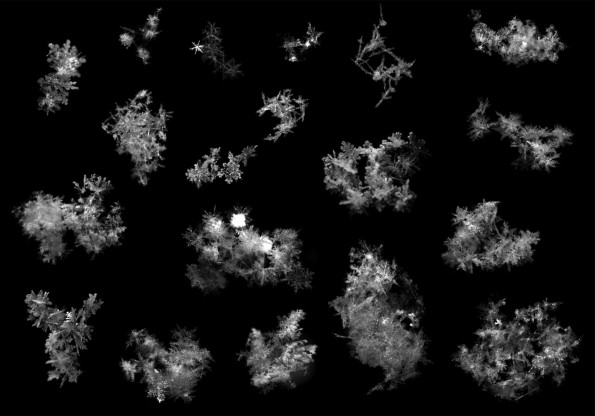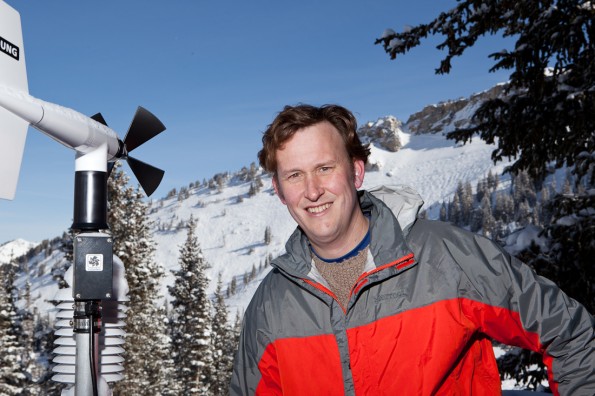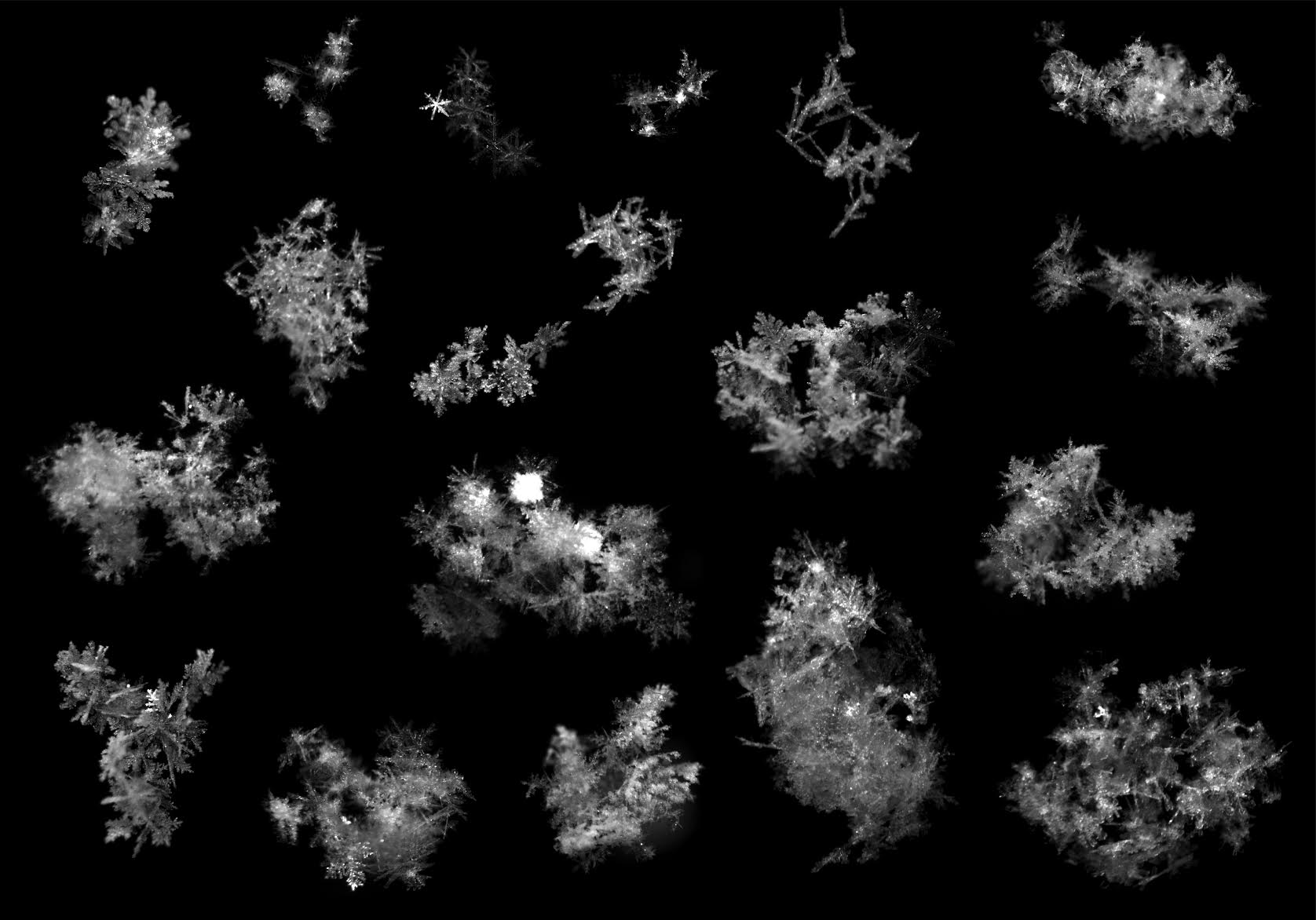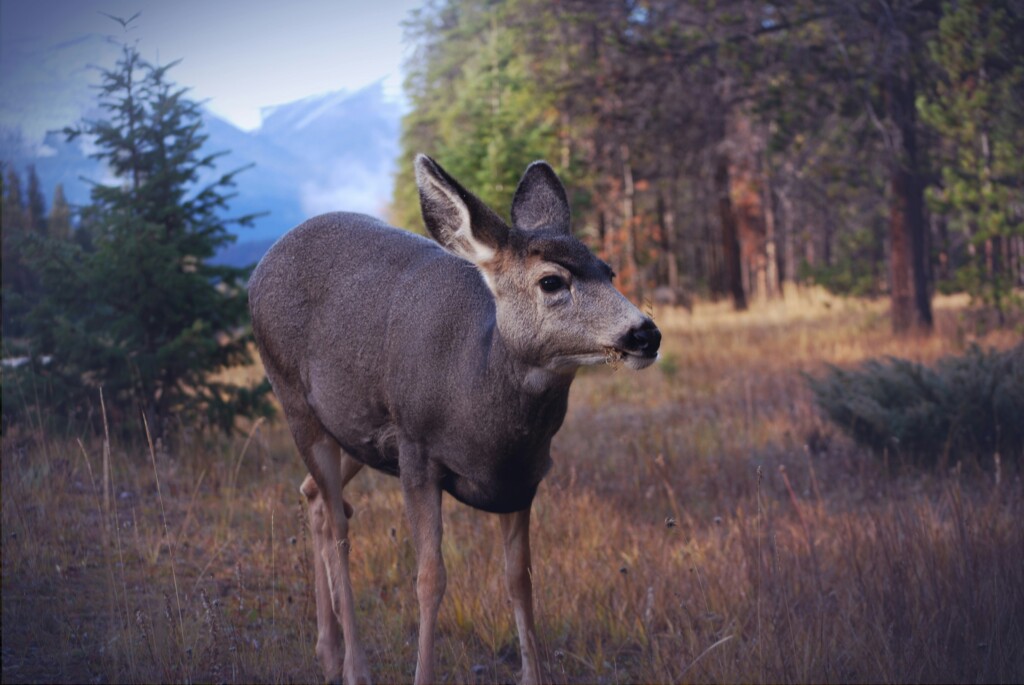
When most people see a mound of snow, they just see an accumulation of snow, but according to Tim Garrett, Professor of Atmospheric Sciences at the University of Utah, it’s really a big pile of snowflakes. “When they land on the ground they start to change over time, because even on the ground they are still evolving,” says Garrett.
“In early December, there were snowflakes that fell in the middle of the night and my camera system was at Red Butte Canyon. I have a live feed online of the snowflakes. I could see these were exceptionally light, fluffy snowflakes, six sided crystals that had collided together to make these big, fluffy things. A perfect snowflake almost never happens,” says Garrett, “Sure enough, on the ground the next day you see this really light, dry, fluffy snow. It’s quite cold and that’s exceptional snow. If there was more of it I think skiers would be thrilled.”
Dust and clay particles act as ice nuclei for the formation of an ice crystal. “It’s not just a single piece of dust, the thinking is that each snow crystal requires a piece of dust, but then it might collide with other pieces of dust and other snow crystals so that a snowflake might have many pieces of dust. We have a lot of dust in the Salt Lake Valley, we have the Salt Flats, particularly the Sevier Lake, (a dry lake bed). When a storm comes through from the southwest, it picks up these very fine clay particles that are in the Sevier Lake and lofts them into the atmosphere. We see this in the springtime, especially with the occasional dust storms that pass through the valley. These clay particles form the ice nuclei. When these little clay particles come in touch with cloud droplets, only then can the cloud droplets freeze. So even if a cloud droplet is well below the freezing point, it has to have a surface to freeze on. It can’t be any surface, it has to be a surface that looks a bit like ice. The molecular structure of clay is very similar to that of ice, so clay particles act as good ice nuclei and so Utah is a good source of ice nuclei,” says Garrett.

Garrett was a graduate student at the University of Washington when he started studying snowflakes, “I was involved in a group that studied cloud physics. I was mostly interested in things like tiny cloud droplets, ice crystals and the arctic, but not really snowflakes. There was one winter, maybe 1999, I was skiing with a friend, I wasn’t a very good skier, but we were talking on the ski lift, he was a graduate student in atmospheric science too, about how incredibly variable the types of snowflakes were as we went up the mountain; one place you might see one kind of snowflake and as we went further up the ski lift we might see another kind of snowflake. We thought, ‘Well gee, this would be interesting to measure something like that, imagine if you actually could, especially if it could be at a ski resort.’ This was in Seattle and eventually I got a job here at the University of Utah as a professor. It crossed my mind given that we were so close to ski resorts here; wouldn’t it be wonderful to try to see if it’s possible to do some of that work. I was very lucky to get a grant from NASA to do some of these studies and to buy an instrument that would enable me to take pictures of snowflakes. We put the camera at Alta ski resort. Alta is historically famous for being at the leading edge of studies of snow since the 1950s and 60s. Some of the first studies of snowflakes were done here in Utah by Monty Atwater and Ed LaChapelle, they are very famous names in the avalanche and ski community. Unfortunately the camera system didn’t work very well, so I worked with an engineer here at the University of Utah to develop a new system called the ‘Multi-Angled Snowflake Camera’ that is able to take a couple million pictures of snowflakes in freefall without touching them and simultaneously measuring how fast they fall at Alta,” says Garrett.
In the past, snowflakes had only been studied in a controlled environment in a lab. Garrett wanted to see the snowflakes in the real world, in an uncontrolled environment. “That’s where we started seeing things that were actually unexpected, seeing a variety of snowflakes, it’s almost mind boggling. It’s just some of what you see up there is so unlike what we could even easily imagine of how different snowflakes are. They’re extremely rare, those simple six sided shapes, that we usually think of, and attempted to cut out with scissors and paper as children. They instead have much more complicated lives, and they really are lives, because they are in the atmosphere for a period of time. For several hours before they hit the ground and during that time their lives aren’t isolated, they collide with and interact with other snowflakes and cloud droplets to create this intertwined collection of frozen droplets and crystals that can be quite surprising in its variability. Some might say the snowflakes look ugly, but I like to think they have their own beauty. It’s quite extraordinary,” says Garrett.
A snowflakes final shape is a history lesson of how it grew. “The outer edges of the snowflake are going to be the ones that interact most easily with their environment, so what you see on the outer edges of the snowflake are the most recent history that it has experienced,” says Garrett.
Why study snowflakes? “I think snowflakes are interesting in their own right. The basic scientific interest is that for myself it’s basic physics, it’s beautiful and it’s a type of physics that is interesting not just to scientist but also to the general public. The overarching reason is that we are interested most in weather and climate, in the amount and type of precipitation. It involves being able to accurately predict weather and cold weather storms; like whether it snows a lot here or there or snows at all and to predict things like climate change and the consequences of climate change. What we need is a refined understanding of how snow forms and falls. This is currently a problem where our understanding is very poor because we have not been able to make many measurements of snow. It may seem surprising, but currently weather and climate models rely to a larger degree upon measurements of 376 snowflakes that were obtained in the early 1970s in the Cascade Mountains over the course of two winters. That’s our data for predicting what kinds of snowflakes fall,” says Garrett.
Turbulence plays a very big role in the snowflakes lifetime and how fast it falls. “We all know that snow swirls, but the interesting thing is that this isn’t in any weather or climate models. So there you have the fun surprise that something that anybody in the general public knows isn’t widely recognized by scientist. It’s hard to model how turbulence interacts with a falling snowflake,” adds Garrett.
“Utah does have the ‘greatest snow on earth,’ but it’s not because it has the driest snow, (actually Colorado’s snow can be dryer) it tends to be deeper snow. That combination of deep, dry snow makes for great skiing,” says Garrett.
“There is a suspicion that the last few years is an indication of a longer trend where the atmosphere is getting warmer in Utah. What this means is that there is more liquid in the atmosphere then there would be if it was colder and that leads to heavier, denser snow, more graupel than fluffy snow. Even I have seen this in the snowflake camera. It used to be that we would get far more fluffy aggregates as they are called than graupel particles. What this means for Utah? It’s hard to make predictions for the future, especially something as complicated and poorly understood as precipitation, snowfall, but I think it is unreasonable to expect that this greatest snow may become less frequent than it has in the past,” adds Garrett.
Garrett’s favorite thing about studying snowflakes is the photography. “Most photographs are terrible, but when you get a good photograph, it’s in focus and the detail is good, it’s fantastic. One of the exciting things of doing the snowflake work is sifting through the snowflakes and having these moments where there is a fantastic picture, to just soak in the incredible detail that these snowflakes have. These snowflakes are tiny, I mean they are a fraction of an inch across, yet when you photograph them at very fine scales you see incredible detail. The atmosphere manages to create such diversity not just between snowflakes but within a single snowflake. It is just beautiful and it’s a story of that snowflake’s life and each of their lives are different,” says Garrett.
“I would like to encourage people to make their own observations by just putting out their sleeve during a snowfall and maybe with a microscope or just by their eyes, take a look at what snowflakes look like, to see how variable they really are,” adds Garrett.
Garrett recommends Wasatch Weather Weenies, (Mountain Meteorology and Snow Snobbery) blog written by fellow University of Utah Atmospheric Sciences Professor Jim Steenburgh.






